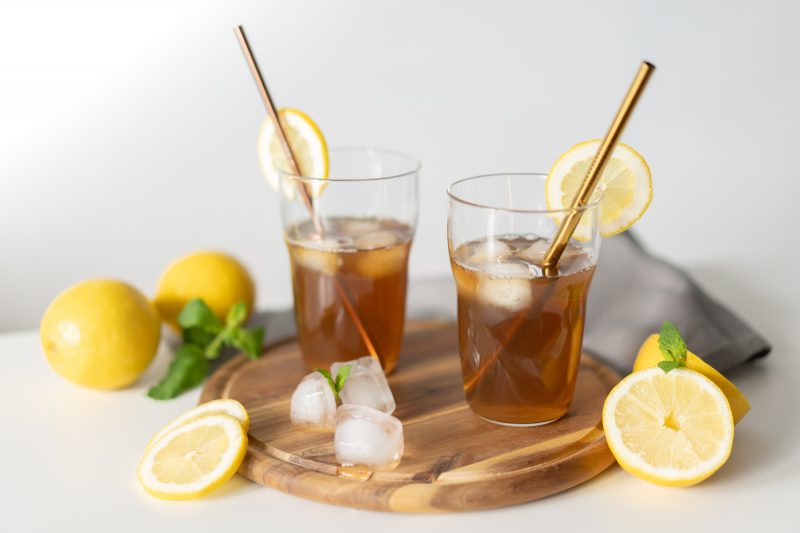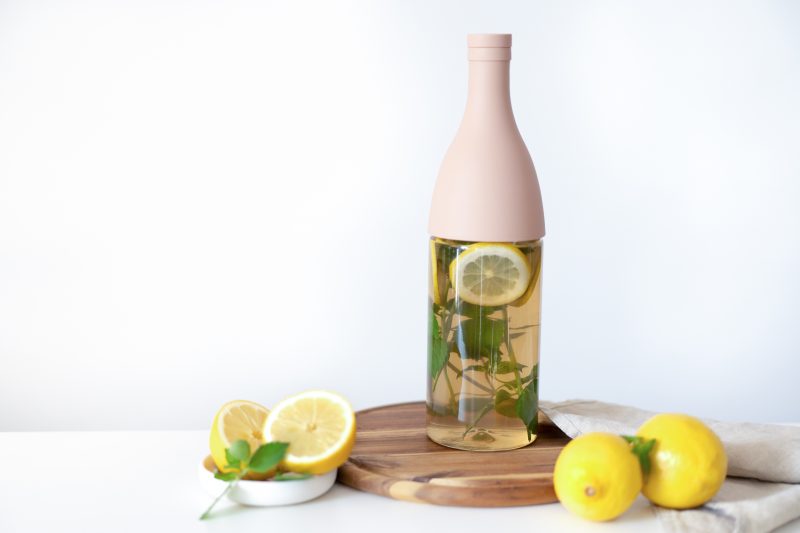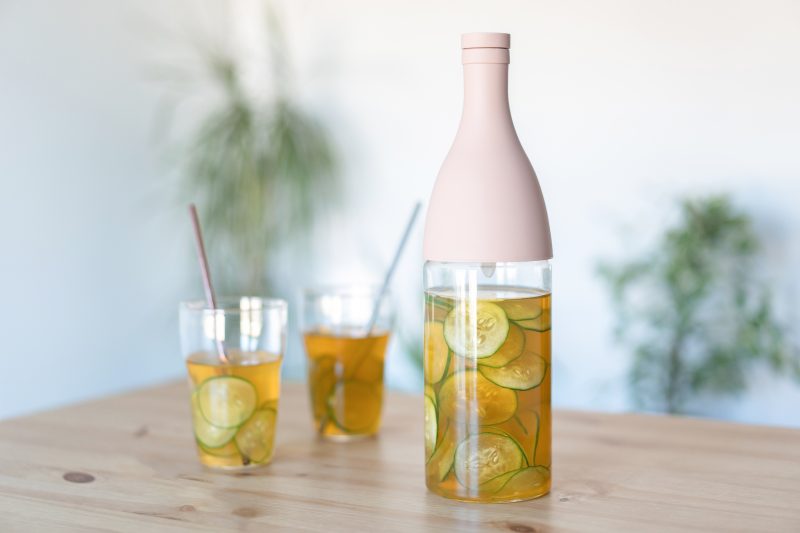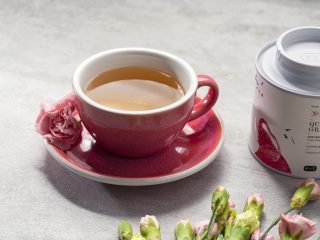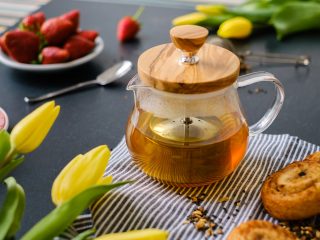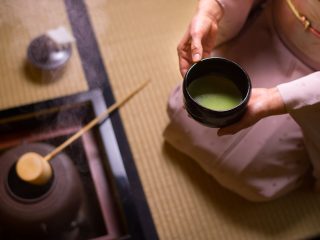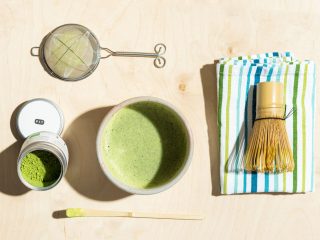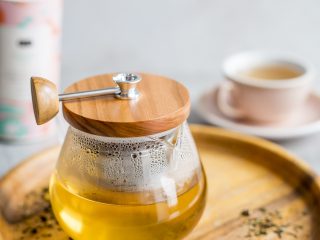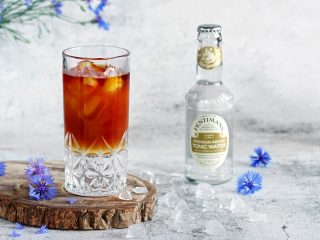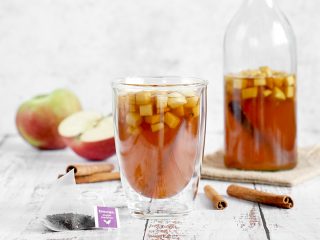Iced tea will always hold a special place in my heart as one of my favourite childhood memories. I remember poking around glass jars with my sister, sniffing teas and creating recipes for iced beverages, mixing tea with fresh herbs and fruit. Black tea with sugar, lemon and ice cubs led the way; strong, astringent and irreplaceable for hot, summer days.
Fifteen years later, I am a barista and still interested in tea. However, I want to take it one step further and find creative ways to brew tea in summer.
The classic approach to iced tea is as follows: we brew tea just like we always do, except our goal is to overextract it in order to achieve the most intense flavor possible. We then pour the brew over ice – and voila! If you opt for this solution, I suggest skipping green tea, as it’s very sensitive to high temperatures; however, flavoured teas will be ideal.
Another option is to cold brew tea – this essentially means brewing leaves for a long time in low temperatures (it is advised to leave it to steep for a couple of hours or even the night). What is the difference between the two options?
Temperature is key – dependng how high it is, we will extract various compounds. Cold brewed tea will contain more carbohydrates and amino acids (that umami flavor); on the other hand, poliphenols and caffeine responsible for astringency will still be present, but in much lower doses compared to traditionally brewed tea.
If you’re in a rush and only tea bags are available, first option will be perfect; all you need is tea (as fine as possible, to increase extraction) and boiling water. Oh, and plenty of ice 🙂
However, if you have time and feel like experimenting, I recommend trying alternative brewing methods – aforementioned cold brew or the most extravagant option – flashed chilled tea. If you’re brewing the traditional way, here are some recipes to start with.
Shaken iced tea
If you’re in a bartender mode and trying tea that’s been shaken over ice, the whole process is rather straightforward – all you need to do is brew loose leaf tea the traditional way, using hot water (do not overextract it) and then shake it over ice. Japanese green teas will be the perfect choice, as they are naturally rich in refreshing, grassy, marine flavors.
Cold brew iced tea
As far as cold brew is concerned, it’s rather tricky to come up with ideal recipe – it all depends on your personal preferences. The good news is that the brewing process happens slowly and you can easily taste the tea as it extracts and decide on your favourite. Although this sounds time-consuming, I promise it’s worth it. Once you find your perfect measurements, the aromas that come through will blow your mind.
Not sure how to start?
Try brewing a couple teaspoons of your favourite tea in cold water – use a jar or a bottle, whichever comes in handy! Leave the mixture in the fridge and have a sip after a few hours – if it’s too weak, give it more time or add more tea; conversely, too strong means you need to shorten the time or lessen the leaf to water ratio.
Now that we brewed the tea, let’s go a step further and experiment – that’s the fun part, the sky is the limit – find inspiration in your garden, local food market…
Here are a few examples you can start with:
Silver Needle and elderflower
I discovered elderflower by accident, when my flatmate came back from holiday and brought homemade preservatives. It was love at first sight – I emptied an entire bottle of syrup in two days (no regrets). Very intense, floral notes with just a touch of lemon are a perfect addition to honey – like Silver Needle. A a word of warning, it’s highly addictive!
Earl grey and lavender
You either love or hate lavender – I definitely belong to the former. If you’re with me, you will love the combination of bergamot, earl grey and lavender. Don’t get too excited when adding lavender – it is quite intense and you only need a little bit.
Jasmine green tea and fresh mango
Correctly brewed, jasmine tea tastes like heaven; not astringent but delicately sweet and floral. Add ripe mango to the brew – its juiciness and buttery notes will complement floral aspect of the tea. Side benefit – no need to add sugar.
Dong Ding oolong and rosemary/grilled lemon
Sounds exotic? This recipe is very straightforward – simply brew some Dong Ding, add a branch of fresh rosemary and grilled lemon; roasting the fruit will take away some of its acidity and add butter-like notes that work well with honey flavor of the tea.
Pu Er Bai Ya white tea and linden
This white tea is somewhat unique – it is made with buds that would eventually grow into branches, not leaves. Hence woody notes and delicate spiciness that will complement floral notes coming through from linden.
Sources:
- https://meileaf.com/article/how-to-flash-chill-tea/
- https://meileaf.com/article/three-ways-to-make-iced-tea/
- https://shennong.co.uk/2018/06/05/tea-and-food-pairing/
- https://specialtyteaalliance.org/world-of-tea/tea-cocktails/
- Tomislav Podreka, „Tea & Food Pairings” (Fresh Cup Magazine 2001)


